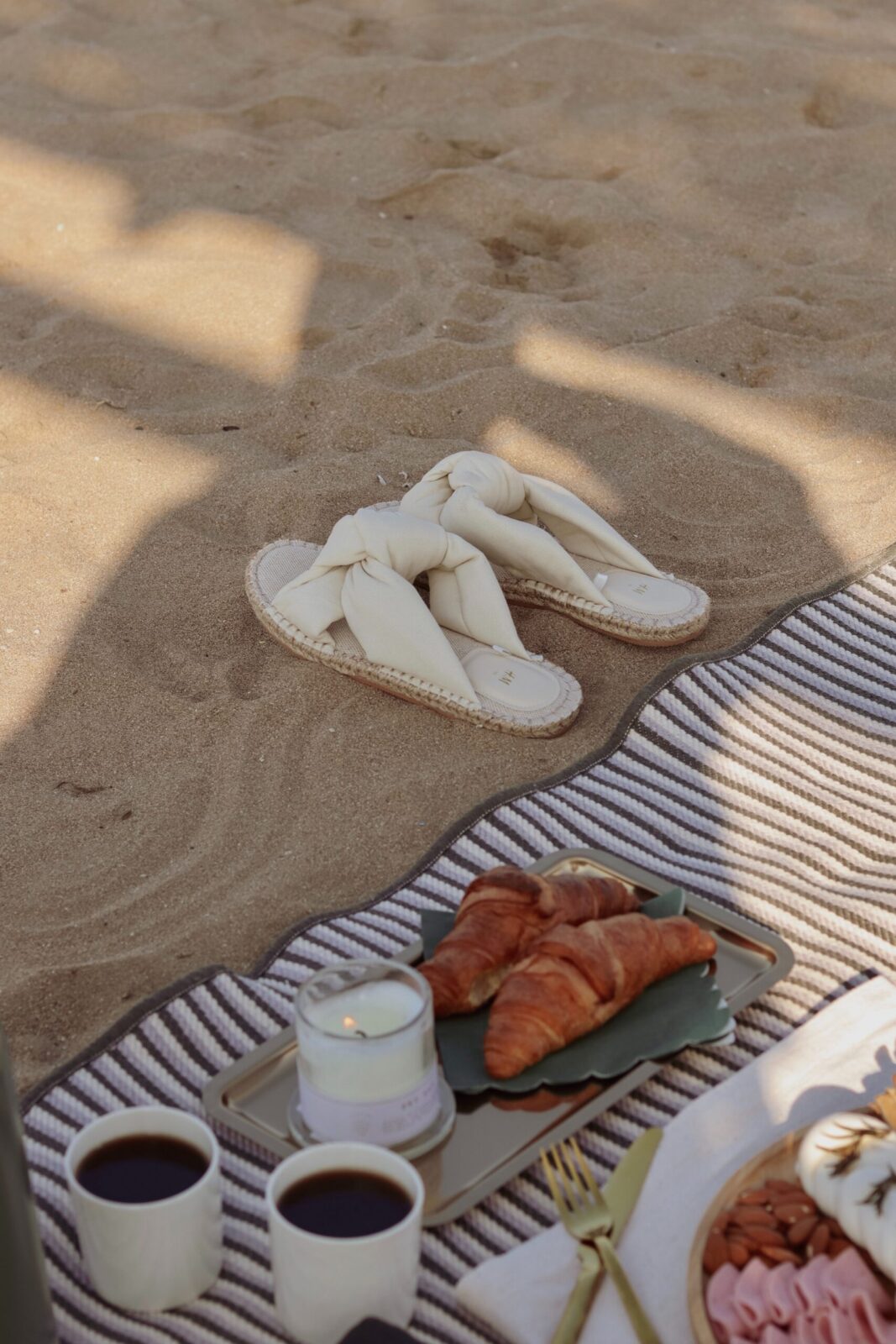What is Clutter?
Clutter is defined as, “a collection of things lying around in an untidy mess.” Clutter, decluttering, tidying – these have all been buzzwords that we have been hearing for a couple of years now. Marie Kondo, The Minimalists, The Home Edit – the term “clutter” has spread like wildfire. Chances are, you’ve seen a few headlines and articles about clutter. While most of these articles to help you clear away the clutter can be incredibly helpful. You’ve got to know how to answer the question – What is clutter? There are many types of clutter and it can look different for everyone. But there are a few common themes that tie that clutter together and make it, well, clutter. If you’re looking to understand what’s become clutter in your home and what needs to go, I’ve got you covered. Keep reading!
Defining What Is Clutter
The burning question you probably have for yourself is “Do I really care about what counts as clutter?” I think the answer to that question is a resounding “Yes!”. Otherwise, you wouldn’t be here, right? You’re finally at a crossroads in your life where you’re ready to finally deal with the clutter. You know that you’re being negatively impacted by the clutter. And you know that it’s taking a toll on your physical and mental well-being. So let’s get after it!
Everyone has a different level of tolerance for clutter. And I would even go as far as to say different levels of different types of clutter. Some of us can’t stand spending time in a space where things aren’t exactly where they belong, or spaces filled to the brim with random things that don’t have any use. Others have a much higher tolerance for that kind of chaos – to the point where they’ll even say, “Clutter doesn’t bother me!”
I don’t know about you but I grew up in a home where dust and dirt were not allowed to gather in my home. And it hasn’t changed. Clutter is a huge culprit when it comes to dust and dirt gathering in your home. If your shelves are covered in home accents you haven’t touched in who-knows-how-long, chances are they are dusty.
Why You Should Care about Types of Clutter and Make A Plan
That dust gets stirred by the movement of the air in your space – when you pass through a room, or when you turn on your ceiling fan. And in turn, that dust can cause allergies, make your cold that much more unbearable, and more. (Raise your hands for the seasonal allergies people! I’m there with you!) Furthermore, mentally, being in the physical presence of clutter can make it difficult to focus and give you brain fog. It can also dampen creativity, cause overwhelm, and raise anxiety levels – consciously or subconsciously.
By living with clutter, you’re keeping yourself from enjoying the benefits of having a decluttered space.
You can experience those benefits once you understand what the types of clutter are and then take the necessary steps to throw the clutter out of your home whether it belongs in the trash, a donation facility, or in someone else’s hands.
How to Determine What The Types of Clutter Are and What’s Worth Keeping
I know you are all excited to finally tackle this decluttering project but before you roll up your sleeves and start chucking all of the things, it’s important to have a clear understanding of what your types of clutter actually are – otherwise, you run the risk of going overboard and getting rid of stuff you’re going to regret.
It’s helpful to remember that different people have different definitions for clutter. What’s clutter to one may not be clutter to another. How’s that saying go? “One man’s junk is another man’s treasure.”
The 5 Types Of Clutter
But there are some helpful guidelines you can use to define what clutter is – and what’s worth keeping. So let’s go over them!
Trash Masquerading as Clutter
Let’s start with the easy stuff. If it’s broken, and you can’t – or won’t – fix it, it’s clutter. Broken stuff serves no purpose. This is especially true for broken items you’re holding onto despite the fact that you’ve already replaced it.
Be realistic here. When did you last use these items? Do you really love them or use them? If not, it’s time to be grateful to them for serving their purpose and then let it go.
You will need to ensure the appropriate way to dispose of these items and get them out of your home. You might have to do a little research – for instance, you need to take that old television to an electronics recycling facility, not toss it in the trash.
Sentimental Clutter From the Past
You found an old picture of three people and you’re in the middle. It’s the one where you’re with your two best friends from elementary school who you still see once or twice a year but you’ve never been super close. Do you keep it or let it go? There are some things you never use but feel the need to keep around for sentimental value – and that’s OK! But go back to the beginning. If it’s broken, doesn’t serve a purpose, and is stuffed into a box and put under the bed, is it really worth keeping? When it comes to stuff like this, the answer is clear – get rid of that clutter and give yourself a little more room to breathe.
Most of us have a few family heirlooms, memories from our childhood, and similar items that we can’t stand the thought of parting with because of the sentiment they hold. Sentimental items and family heirlooms that can become cluttered if they’re kept in a disorganized way and have become burdensome. By putting these things where they belong or storing them properly, you can resolve that issue without having to toss them to the curb. Remember, if you don’t love it or use it, it’s clutter. And if your goal is to simplify your space, show these items gratitude and then let them go.
Clutter Without a Place
Now, not all clutter is destined for the landfill or local donation center. Some clutter simply needs to be put back in its proper place – at which point, it won’t be considered clutter any longer. Those books piled haphazardly on your coffee table? Clutter. Put them back on the shelf where they belong, and they’re part of your collection.
Do you have clothes strewn around your bedroom or piled on chairs? Clutter. Fold or hang everything up, and voila! That’s your wardrobe, not clutter. Are there children’s toys and board games that seemingly cover every square inch of your floor? Clutter, until you put them back in their proper spot to then be taken out again.
One Rule – With 15 minutes of tidying at the end of the day, your house will be clutter-free every day!
Aspirational Clutter for the Future
Aspirational clutter are items you accumulate to help you change, develop a skill, or appear differently to others. Think, “Keeping Up With The Jones”. Thank heavens for the Instagram trend of “de-influencing”. For example, if you’ve ever purchased a glamorous “coffee table” book to keep on display, but never actually read it, you may have fallen victim to aspirational clutter. Or, you may have purchased all of the gear for a new sport like golf or tennis in anticipation of taking up the sport but realized you didn’t like the game after the first lesson.
The best way to guarantee this type of clutter does not come up anymore is to have a conversation with yourself before purchasing the item(s) required. What about if you are determined to change your entire home’s style of decor? If you are just about to buy a drastically different style sofa, first ask yourself these questions to get clear on your intention:
- Why do you truly want to change your style of decor?
- What attracts you to the style?
- Where are you going to put your current furniture?
Bargain Items You Never Needed
I am guilty of this one. Bargain hunting, flea markets, antiquing, and store sales are my weakness. And I mean who can resist a good store sale, yard sale, goody bag, or promotional gift with a purchase? But I’ve learned the hard way that even if something is free or too good to pass up, why bring it into your home to only take up space, care or lack thereof, and never to be used again? Only to find it months later and chuck it into a donate box, or worse, the trash. If you’re never going to use it or gift it, the item wasn’t a bargain. Bargains and promotional swag bags full of products from the mall or business conferences can easily turn into clutter.
What Isn’t Clutter?
Now that you have a better understanding of what is clutter and the types of clutter, let’s spend a moment talking about what isn’t clutter. There’s a lot of obvious stuff – things you truly need, things you use on a regular basis, and things that serve a meaningful purpose in your home and bring you joy.
But there’s a lot of stuff that doesn’t fall into any of those categories that isn’t necessarily cluttered, either. While most clutter doesn’t serve a real purpose in your home, not everything has to serve a purpose. I’m talking about things like art, sentimental items, or even family heirlooms like a butter churner (in my case). If something makes you happy and adds value in some way, that’s a fair argument for keeping it around. You just have to find the right place for it to go and keep it there when you aren’t using it.
Sometimes it’s easy to assume that no items in a particular category could be considered clutter. The trick is to be willing to challenge your own assumptions so that you don’t end up keeping more than you’re comfortable with while you’re already tackling this decluttering project. One further complicating factor is if you and your partner don’t agree on what clutter is or if they have no interest in decluttering at all. Communication and compromise are key to finding a balance that will work for both of you.
Now what? The next step in the decluttering process.
Now that you’re able to more clearly define what clutter is in your home, you can start the decluttering process by signing up for the Holistic Home Refresh Challenge now. My challenge will help you by taking a look at your space holistically. I can’t wait to see you inside! Let me know in the comments how your decluttering project is going and join my e-mail newsletter here to keep up to date on additional tips and tricks to love your home.
Love,






[…] to credit cards to email subscriptions to books can be pared down. Try not to think of this as just “getting rid” of stuff, but making time and space for what really […]